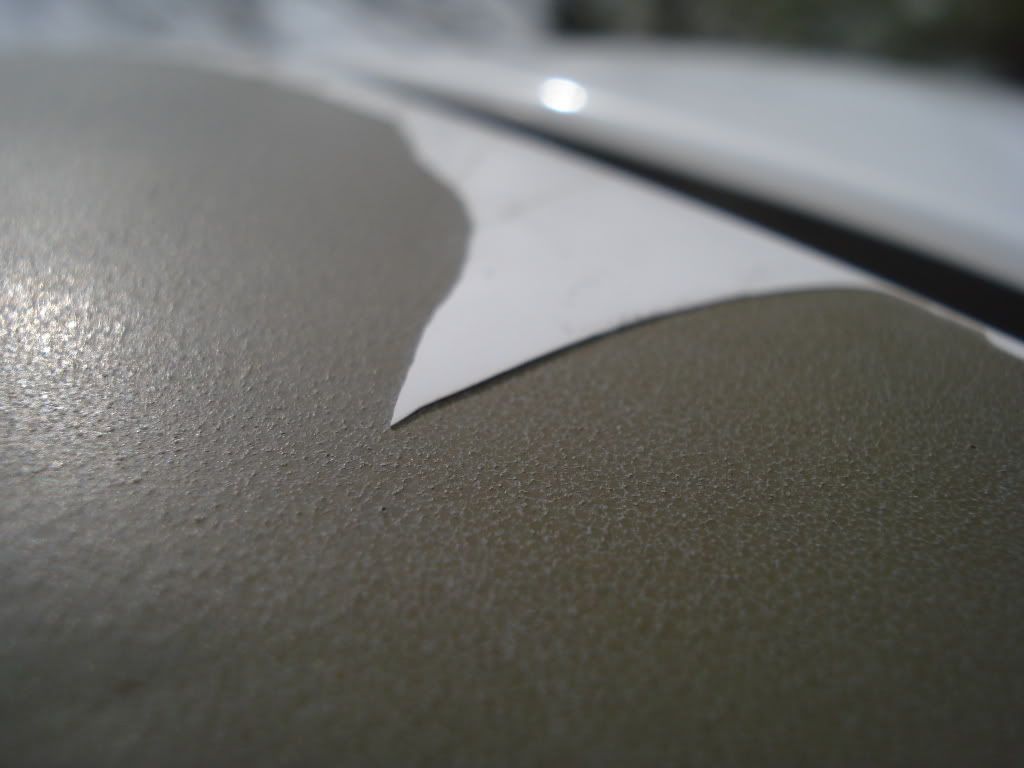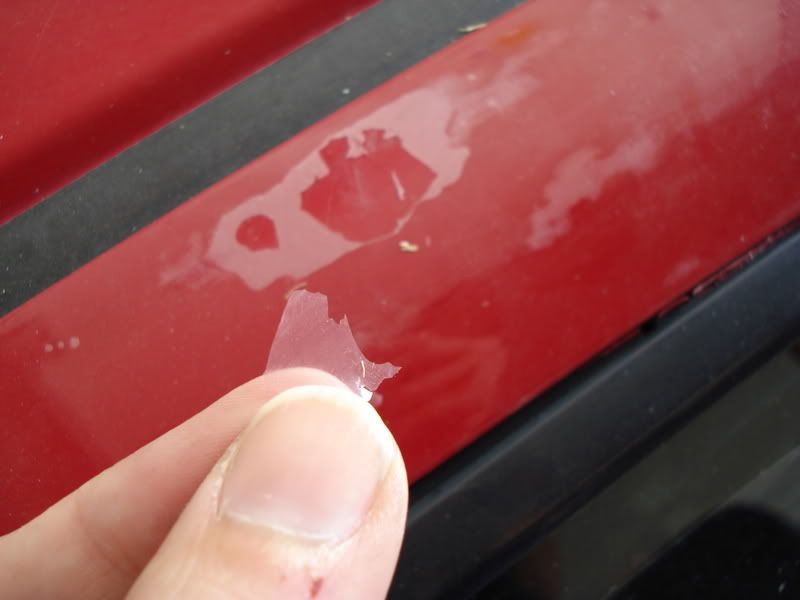Jngrbrdman
New member
Your paint is pretty darn thin. Somewhat thinner than a Post-It note if you wanted to compare. My brother in law had a POS van where the paint was peeling right off of it. I took out my old school paint thickness gauge just to see what it would tell me. I bought mine on ebay for like $30 bucks I think, but if you google it and look around then you can find them for about $60 on the interwebs.


The idea is to place the magnetic end on your car and pull up till it releases. Whatever it said right before it let go is how thick the paint is. Not the most precise way to measure paint, but it gives you some ballpark figures if you were ever curious. It only works on ferrous metal painted surfaces, of course, so ABS or bondo painted areas are going to remain a mystery.
Here is the baseline test on the barest of metal. It went all the way up till there were no measurements and only broke loose because the magnet isn't stronger than the spring. (It is to be noted that a 3 year old IS stronger than the spring, so don't leave this lying around or it will end up like mine did.)

Then right next to it on a painted area and pull up. This is measuring in mils and the average is supposed to be around 7, so this is either pretty thick paint, or a slightly off measurement. I opt for thick because it was spot on with several other vehicles. The paint being so thick may account for why it is totally peeling off the vehicle. (the fact it is a Chrysler doesn't help much either)

Just in case you didn't know, the 'mil' referred to is not 'millimeter'. This is a different unit of measure equal to .001 inch or roughly .03 millimeters. Human hair is approx 3 mils thick, so your paint is not typically as thick as three of your hairs stacked on top of each other.
And for anyone who doesn't believe that their clear coat is even thinner, take a look at this:

I peeled that off an old '93 Integra that had serious paint problems.
So the bottom line is that your paint is pretty darn thin. You can scratch clear through it right down to the sheet metal without a whole lot of effort if the paint is soft enough. The funny thing is that my Corolla actually measures to be around 4 or 5 mils, but it is a lot harder to scratch than my Subaru which measured 6 or 7 mils. So the type of paint means almost more than the thickness sometimes.


The idea is to place the magnetic end on your car and pull up till it releases. Whatever it said right before it let go is how thick the paint is. Not the most precise way to measure paint, but it gives you some ballpark figures if you were ever curious. It only works on ferrous metal painted surfaces, of course, so ABS or bondo painted areas are going to remain a mystery.
Here is the baseline test on the barest of metal. It went all the way up till there were no measurements and only broke loose because the magnet isn't stronger than the spring. (It is to be noted that a 3 year old IS stronger than the spring, so don't leave this lying around or it will end up like mine did.)

Then right next to it on a painted area and pull up. This is measuring in mils and the average is supposed to be around 7, so this is either pretty thick paint, or a slightly off measurement. I opt for thick because it was spot on with several other vehicles. The paint being so thick may account for why it is totally peeling off the vehicle. (the fact it is a Chrysler doesn't help much either)

Just in case you didn't know, the 'mil' referred to is not 'millimeter'. This is a different unit of measure equal to .001 inch or roughly .03 millimeters. Human hair is approx 3 mils thick, so your paint is not typically as thick as three of your hairs stacked on top of each other.
And for anyone who doesn't believe that their clear coat is even thinner, take a look at this:

I peeled that off an old '93 Integra that had serious paint problems.
So the bottom line is that your paint is pretty darn thin. You can scratch clear through it right down to the sheet metal without a whole lot of effort if the paint is soft enough. The funny thing is that my Corolla actually measures to be around 4 or 5 mils, but it is a lot harder to scratch than my Subaru which measured 6 or 7 mils. So the type of paint means almost more than the thickness sometimes.
